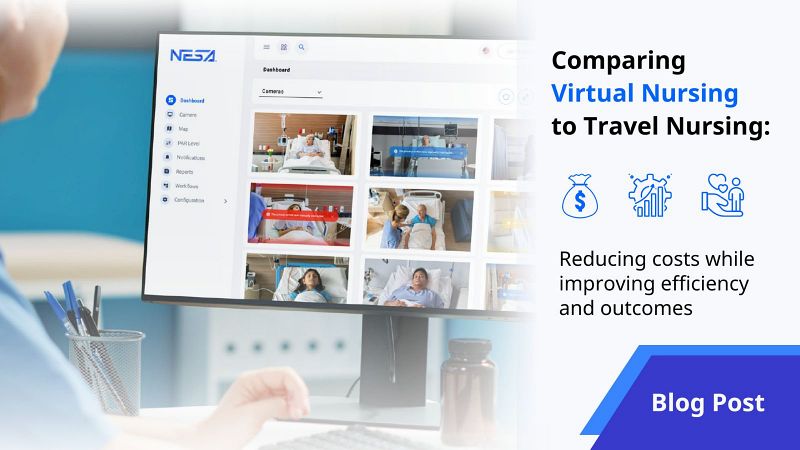
The healthcare industry is evolving rapidly. Healthcare organizations are increasingly embracing virtual care, recognizing its potential to revolutionize the delivery of patient care. While the value of travel nurses remains critical, the rise of virtual nursing represents a significant new shift in the landscape. Virtual nursing offers healthcare organizations enhanced flexibility, operational efficiency, and cost savings, marking a transformative change in how care is provided and managed.
Virtual nursing allows for better resource allocation, by enabling remote monitoring and consultation. Virtual nurses can expand their reach by seeing more patients, more quickly, and with the same or better attention to detail – ensuring that hospitals can maintain adequate patient care without compromising on quality, and reducing the need for travel nurses to step in during periods of high demand.
Virtual nursing provides scalability and flexibility in staffing, allowing healthcare organizations to adjust staffing levels in real-time based on patient needs without the logistical challenges of bringing in traveler nurses. This adaptability was highlighted during the COVID-19 pandemic, where many hospitals successfully scaled their telehealth programs to meet surging patient demands. In addition, it can reduce burnout and job dissatisfaction and increase retention rates among nursing staff by providing nurses with more flexible work environments and improving job satisfaction.
Utilizing virtual nursing can be more cost-effective than hiring traveler nurses. A study by the Healthcare Financial Management Association (HFMA) found that telehealth services can save healthcare facilities up to 40% in staffing costs compared to using traveler nurses, driven by greater operational efficiency and the elimination of these additional, high-cost expenses.
Virtual nursing offers several cost advantages over hiring traveler nurses. Some of these include a lower hourly rate, housing assistance, overtime, reduction in onboarding, recruitment and training costs. This flexibility can help fill staffing gaps without the need to bring in more expensive temporary staff.
Furthermore, virtual nursing can enhance patient care by ensuring continuous monitoring and quick intervention when needed. Research published in the Journal of Nursing Administration showed that hospitals using virtual nursing programs experienced fewer patient falls and medication errors, which can reduce the workload and stress on on-site nurses. What better way to increase positive patient outcomes than by having your own experienced nurses help maintain high standards without the need for expensive traveler nurses.
Overall, virtual nursing offers a strategic approach to mitigating staffing shortages and reducing the dependency on traveler nurses, leading to more sustainable and efficient healthcare delivery leading to better outcomes and satisfaction.



